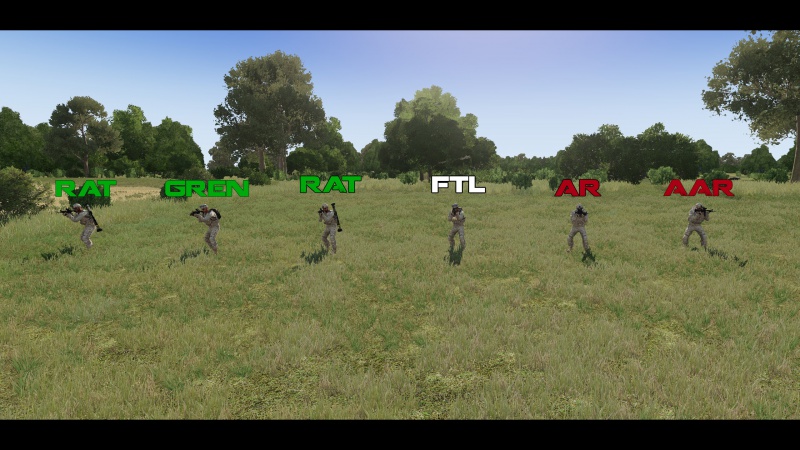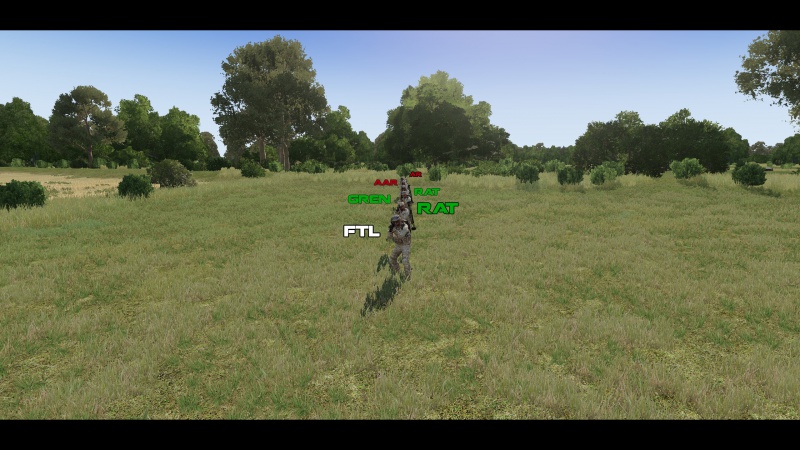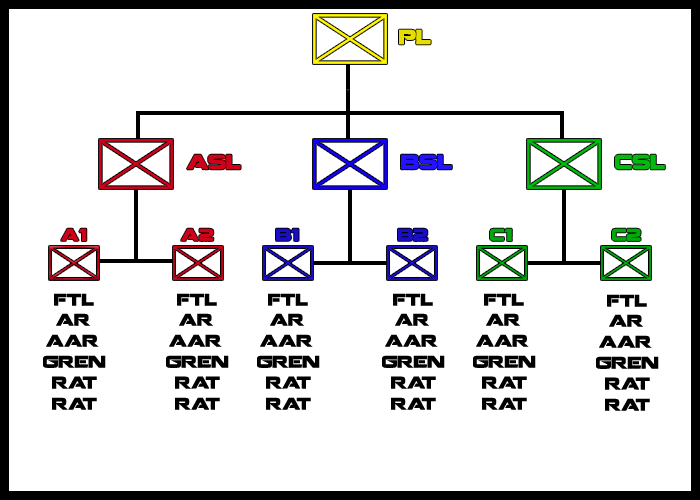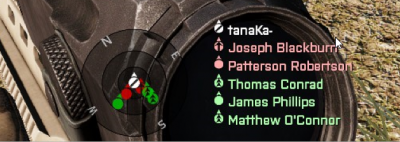New Infantry Guide
Views
Actions
Namespaces
Variants
Tools
THIS GUIDE IS CURRENTLY A WORK IN PROGRESS! Welcome to the new infantryman's guide to surviving the coalition session. The purpose of this guide is to introduce you to how the community of Coalition conducts warfare and what you need to know before the bullets start flying, rather than what the US military does in the real world. While our tactics, techniques, and procedures sometimes match and greatly pull from our real-world counterparts, it would be silly to teach you real-world tactics for a virtual environment like some "super-milsim" group.
With that in mind, take this guide seriously as you'll be expected to know and perform techniques written here in real time during sessions.
The Basics
Platoon Structure
PL - Platoon Lead Element Size: 2-4 Players Rank(s): Lieutenant Command position: 1st in command Consists of the platoon leader (PL) and chief medical officer. Depending on the mission scenario, supports such as aircraft, armored vehicles, and/or crew served weapons will also be attached to the PL's command.
ASL - Alpha Squad Lead Element Size: 2 Players Rank(s): Staff Sergeant Command position: 2nd in command Consists of the Alpha Squad Leader (ASL) and Alpha Medic. These two work directly with the fireteam leaders to maneuver infantry in the most efficient manner possible. When not commanding, reports all battle information higher to the platoon leader and/or supports above him.
BSL - Bravo Squad Lead Element Size: 2 Players Rank(s): Staff Sergeant Command position: 3rd in command Consists of the Bravo Squad Leader (BSL) and Bravo Medic. These two work directly with the fireteam leaders to maneuver infantry in the most efficient manner possible. When not commanding, reports all battle information higher to the platoon leader and/or supports above him.
CSL - Charlie Squad Lead Element Size: 2 Players Rank(s): Staff Sergeant Command position: 4th in command Consists of the Charlie Squad Leader (CSL) and Charlie Medic. These two work directly with the fireteam leaders to maneuver infantry in the most efficient manner possible. When not commanding, reports all battle information higher to the platoon leader and/or supports above him.
A1 - C2 Fireteams Size: 4 (minimum) - 6 (maximum) Players Rank(s): Corporal (FTL) - Private (RAT) Command position: N/A Each squad element consists of two fire teams. Each fire team consists of at least four troops: FTL - Fireteam Leader AR - Automatic Rifleman (Second in command) AAR - Assistant Automatic Rifleman RAT1 - Rifleman Anti-tank If using a six-man fireteam, the extra two roles will also be added to the team: GREN - Grenadier RAT2 - Rifleman Anti-tank
Fireteam Structure & Roles
There are five roles in each fire team that you must know:
FTL - Fireteam Leader
- The FTL's job is to command and control in a chaotic environment and ultimately ensure the enemy is killed by utilizing his team properly.
- Loadout:
- Rifle with M203/M320 or GP25 GL
- Binoculars
- Short-range radio (Fireteam), Medium-range radio (Squad)
AR - Automatic Rifleman
- The AR's job is to cover all sectors of fire issued as a base-of-fire as well as cause maximum casualties possible to the enemy.
- Loadout:
- Automatic Rifle or LMG
- Pistol
- Short-range radio (Fireteam)
AAR - Assistant Automatic Rifleman
- The AAR's job is to spot for the AR, adjust his fire, and ensure he maintains a healthy amount of ammunition when possible.
- Loadout:
- Rifle or Carbine
- Binoculars
- Short-range radio
RAT - Rifleman Anti-tank
- The RAT's job is to serve as a generally room-clearing or maneuver rifleman as well as destroy any armored assets the fire team may encounter.
- Loadout:
- Rifle or Carbine
- Single-use anti-tank launcher
- Short-range radio
GREN - Grenadier
- The GREN's job is to serve as a maneuver rifleman with the added ability to lay extra indirect fire on to enemy positions.
- Loadout:
- Rifle with M203/M320 or GP25 GL
- Extra grenades
- Short-range radio
A Coalition fireteam is broken down into two color teams, each with their own purpose:
RED TEAM - FTL, AR, AAR
GREEN TEAM - GREN, RAT, RAT
Red team serves as a base-of-fire (BOF) team with the FTL, AR, and AAR. The combination of an underbarrelled grenade launcher, light machine gun (LMG), and two sets of binoculars enables red team to provide command and cover to green team in a multitude of environments.
Green team serves as a maneuver element within the fire team. Their job is to clear buildings, flank if pinned, and generally destroy any vehicle threats that may happen upon the fire team.
A competent fire team leader will combine both teams efficiently to ensure they work together across multiple types of terrain.
Role Limitations
While as a recruit during your first couple weeks in the community, you will not be able to take the Fireteam Leader (FTL) or Automatic Rifleman (AR) roles so that you can learn how to be a fireteam member before leading one.
Formations & Spacing
There are a total of three formations you need to know:
By default, we use the wedge as a movement-to-contact formation. This formation allows for the maximum firepower forward and to
the rear if need-be, but suffers from a large cross-section from the sides.
THE LINE

click for larger picture
Not to be confused with the column, the line is commonly used as a reaction to contact from the wedge to get maximum fire power
forward. It is also used in forests or dense terrain.
THE COLUMN

click for larger picture
The column is used when traversing dangerous obstacles like minefields or when visual signature needs to be as low as possible.
Has great fire support to the flanks, but lacks in the rear and forward. Notice red team is in the rear in order to provide
maximum support.
Each formation consists of a minimum of 5 meters of spacing as displayed in the pictures above.
Your team leader will always instruct you to "push out" or "pull in" while moving in formation and you can utilize your STUI compass to help control spacing.
Radios
We utilize a mod called Advanced Combat Radio Environment, or "ACRE2" for short, to communicate while in game. This uses your normal push-to-talk key in teamspeak to transmit your voice into a 3D environment. It also adds new radio items to communicate long distances. A brief guide can be found here, but don't look to deep into it. You will automatically be assigned a radio per mission and it will be setup to be on your fire teams frequency from the start.
Communicating
One of the best things you can do as a new infantryman is learn to communicate with your other fire team members. Regardless of roles, know when to and when not to speak on the fireteam radio to ensure maximum information flow reaches the right ears. Some guidelines:
- Always state your name when speaking on the radio. Avoid words like "me" and "I".
- Use the "ADD" report when calling contact on the radio - Alert, Direction, Distance
- Example: Contact, two EI at that tree line bearing 252, 300 meters
- Stay with your color team at all times. This allows you to simply speak to them.
The Advanced
Movement Orders
Occasionally, your team leader may order you to do specific movements that you will need to know.
Bounding
Pictures TBA
Peeling
Pictures TBA
Playing AAR
The AAR is the second man behind the LMG. His task is to support the Automatic Rifleman in the employment of his gun and protect him during its employment. His tasks include:
- Spotting targets and observing bullet impact using the Binoculars
- Carrying spare ammunition for the gun to sustain its fire
- Watching the ARs flanks while he employs the gun due to his natural inclination to tunnel vision
Playing RAT
The Rifleman (Anti-Tank) is our primary means of defense against enemy armored vehicles. You are the fire teams, and often the whole platoons only anti-tank asset. Thus, your armament and your proficiency with it can make the difference between your whole team dying - or not. Some necessary skills:
Playing GREN
The Grenadiers weapon is the grenade launcher, most commonly fixed under the barrel. With it, he can use both HE grenades to fight enemies behind cover, in ditches or in windows and smoke grenades to conceal his teams movement. His skills include:
- Range estimation to target
- Employing the HE grenades with precision
- Knowing when and how to employ smoke!
- Rule of thumb: Never smoke your own position unless you are retreating. Smoke the enemies position or the path to the enemies position instead. Avoid placing smokes in a way that you have to run through your own smoke.


